Ready player two: where is Voyager 2 now
3rd Oct 2023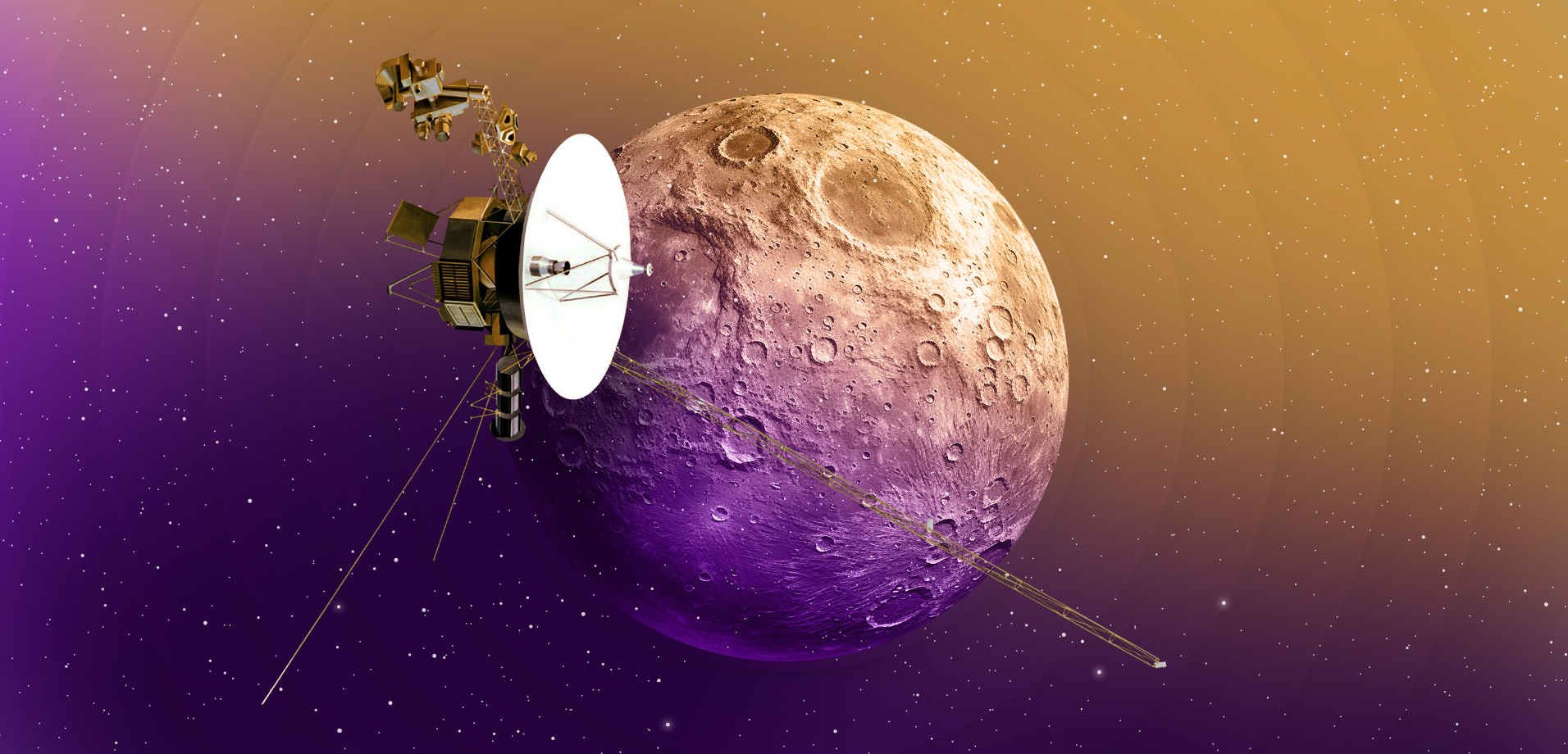
46 years of flying to infinity… That’s how long NASA’s Voyagers have been traveling through space. We’ve told you the story of Voyager 1 before, and now it’s the turn of its twin brother — Voyager 2. So, let’s dive into the details of the Voyager 2 mission.
General Voyager 2 facts
Voyager 2 is one of the most iconic and successful space probes ever launched by NASA. It is the first human-made object to fly by Neptune and Uranus, and the only spacecraft to study all four of the solar system’s giant planets at close range. Here are some key facts about Voyager 2:
- Voyager 2 launch date: August 20, 1977, from Cape Canaveral, Florida, aboard a Titan III-E/Centaur rocket.
- Primary mission objective: to learn the outer planets of the Solar System, including Jupiter, Saturn, Uranus, and Neptune, to study their atmospheres, magnetic fields, moons, and rings. Besides that similar to Voyager 1, Voyager 2 carries a “Golden Record” with sounds, images, and greetings from Earth, intended to communicate with potential extraterrestrial civilizations.
- Interstellar space: on November 5, 2018, Voyager 2 has exited the heliosphere (the region influenced by the Sun) and entered interstellar space. This made the probe the second human-made object to reach this milestone, after Voyager 1.
- Current mission status: Despite being launched 46 years ago, Voyager 2 is still operational and communicating with Earth. It continues to send back valuable data from the edge of our solar system, providing insights into the conditions of interstellar space.
- Current distance from Earth: over 19.9 billion kilometres (about 12.4 billion miles) or 133 A.U.
Planetary Flybys (closest approach):
- Jupiter: on July 9, 1979,
- Saturn: on August 25, 1981,
- Uranus: on January 24, 1986,
- Neptune: on August 25, 1989
What did Voyager 2 discover?
- Revealed details about Jupiter’s atmosphere, its Great Red Spot, and its four largest moons, known as the Galilean moons. Сonfirmed the existence of a thin ring surrounding the planet and also discovered a previously unknown moon, later named Adrastea.
- Obtained detailed images of Saturn’s rings, its moons, and the dynamic environment around the planet.
- Discovered ten new moons around Uranus, detected a faint ring system, and provided valuable data about Uranus’ atmosphere and magnetic field.
- Discovered five new moons around Neptune, four rings, Neptune’s Great Dark Spot, and studied its atmosphere and magnetic field.
How did the Voyager project originate?
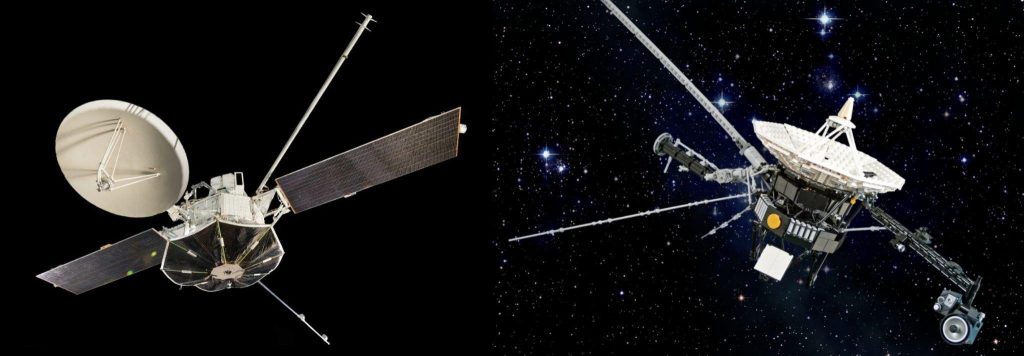
The project idea originated in 1964 at the suggestion of Gary Flandro from NASA’s Jet Propulsion Laboratory. The young engineer pointed out that the alignment of the outer planets of the solar system, which occurs once every 175 years and was supposed to occur in the late 1970s, could allow one explorer to sequentially visit the systems of all four gas giants using a gravitational manoeuvre. Not wanting to miss this unique opportunity, NASA launched the Grand Tour program, in which it planned to build two new probes for two missions instead of one. The first launch was planned in 1977 (to Jupiter, Saturn and Pluto), and the second in 1979 to Jupiter, Uranus and Neptune. Such a scheme made it possible to reduce the total mission time, compared to the launch of one probe, by almost half: from 13 to 7.5 years.
But the American budget was not without limits, and in December 1971, the US Congress cancelled funding for the Grand Tour in favour of the already approved Space Shuttle program. Instead, NASA was asked to limit itself to visiting only two planets, Jupiter and Saturn, using two probes of the then-well-established Mariner class.
The program’s working title, Mariner Jupiter-Saturn, was changed to Voyager just a few months before launch. NASA felt that Mariner 11 and 12, improved specifically for the mission, were worthy of a separate name.
What is Voyager 2?
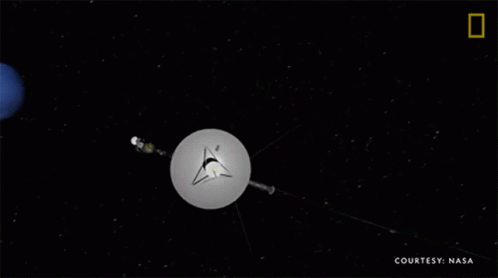
Voyager 2 is a space probe, unique, and so incredibly reliable and stable, that, even after 45 years of travelling into outer space, it is still proving itself. The probes are almost identical in design and set of scientific instruments. Each probe about five million parts, with minor differences due to different mission objectives.
Here are the specs of the Voyager 2 spacecraft:
| Design | Three-axis stabilized system that uses celestial or gyro-referenced attitude control to maintain the pointing of the high-gain antennas toward Earth. |
| Manufacturer | NASA / Jet Propulsion Lab (JPL) |
| Mass | 1,592 pounds (721.9 kilograms) |
| Communications | 1. A 12 ft parabolic, high-gain antenna to transceive data via the Deep Space Network on the Earth. 2. Digital Tape Recorder (DTR) with 64 MB storage in cases when the spacecraft is unable to communicate with Earth |
| Power supplies | Three Multi Hundred-Watt radioisotope thermoelectric generators (MHW RTG) powered by plutonium-238. At launch, the total electrical power of the generators was 470 watts. but it is gradually decreasing due to plutonium decay and thermocouple degradation. In April 2023 NASA began using a reservoir of backup power intended for an onboard safety mechanism to keep five scientific instruments needed to continue the research |
| Engines | 1. Propulsion module: one 2,476 lb solid-rocket motor to achieve a Jupiter trajectory boost; eight hydrazine monopropellant rocket engines to provide pitch and yaw attitude control and roll control. The propulsion module was jettisoned shortly after the successful Jupiter burn 2. Mission module: 16 hydrazine MR-103 thrusters for attitude control |
| Scientific Instruments | 1. Imaging Science System (ISS) 2. Ultraviolet Spectrometer (UVS) 3. Infrared Interferometer Spectrometer (IRIS) 4. Planetary Radio Astronomy Experiment (PRA) 5. Photopolarimeter (PPS) 6. Triaxial Fluxgate Magnetometer (MAG) 7. Plasma Spectrometer (PLS) 8. Low-Energy Charged Particles Experiment (LECP) 9. Plasma Waves Experiment (PWS) 10. Cosmic Ray Telescope (CRS) 11. Radio Science Subsystem (RSS) |
Voyager 2 pictures
These photos from the NASA/SPL site help you to get an in-depth look at the science instruments aboard the Voyager spacecraft and the construction details of the probe.
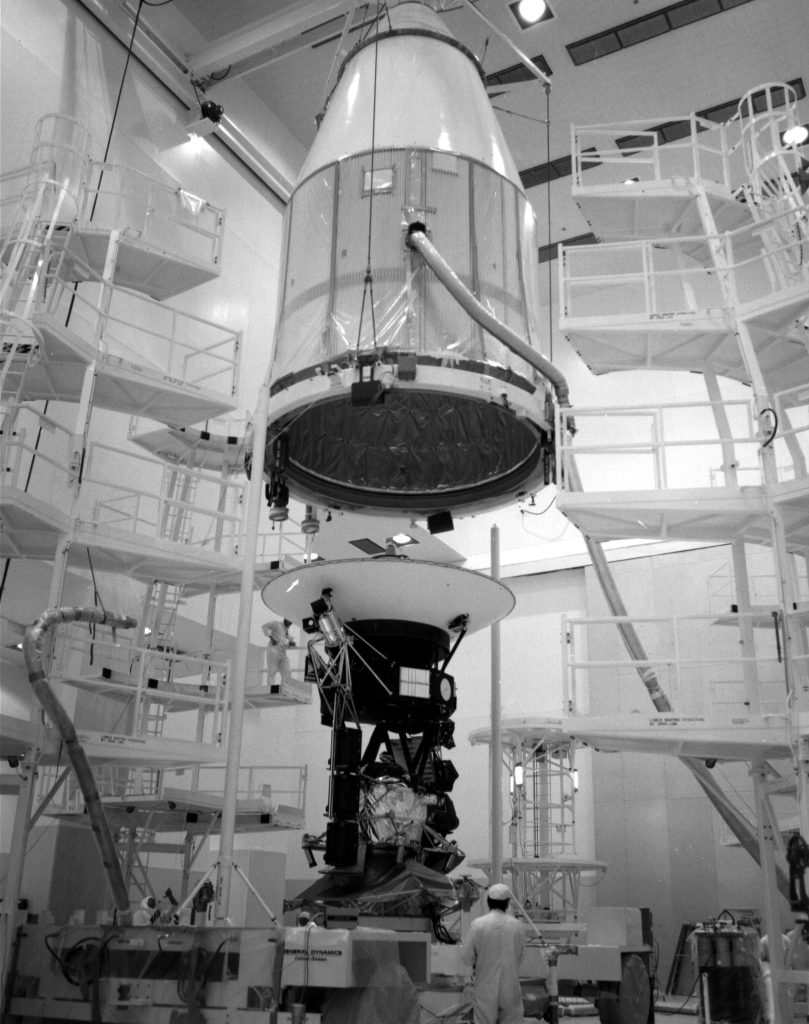
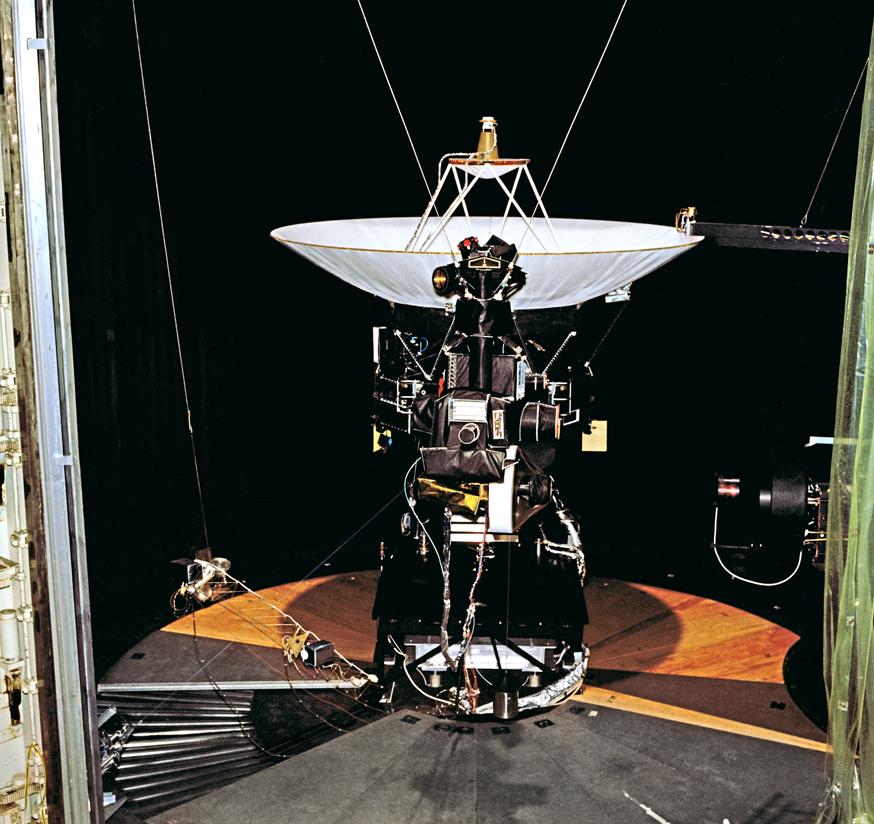
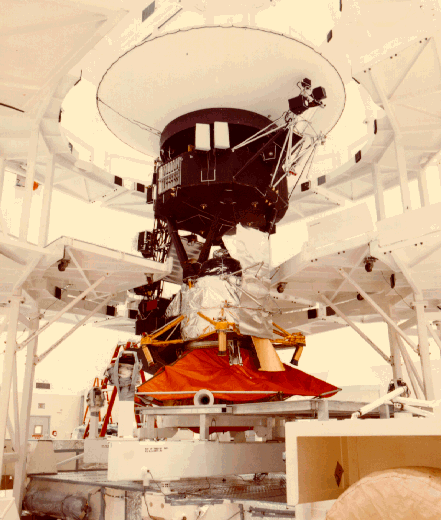
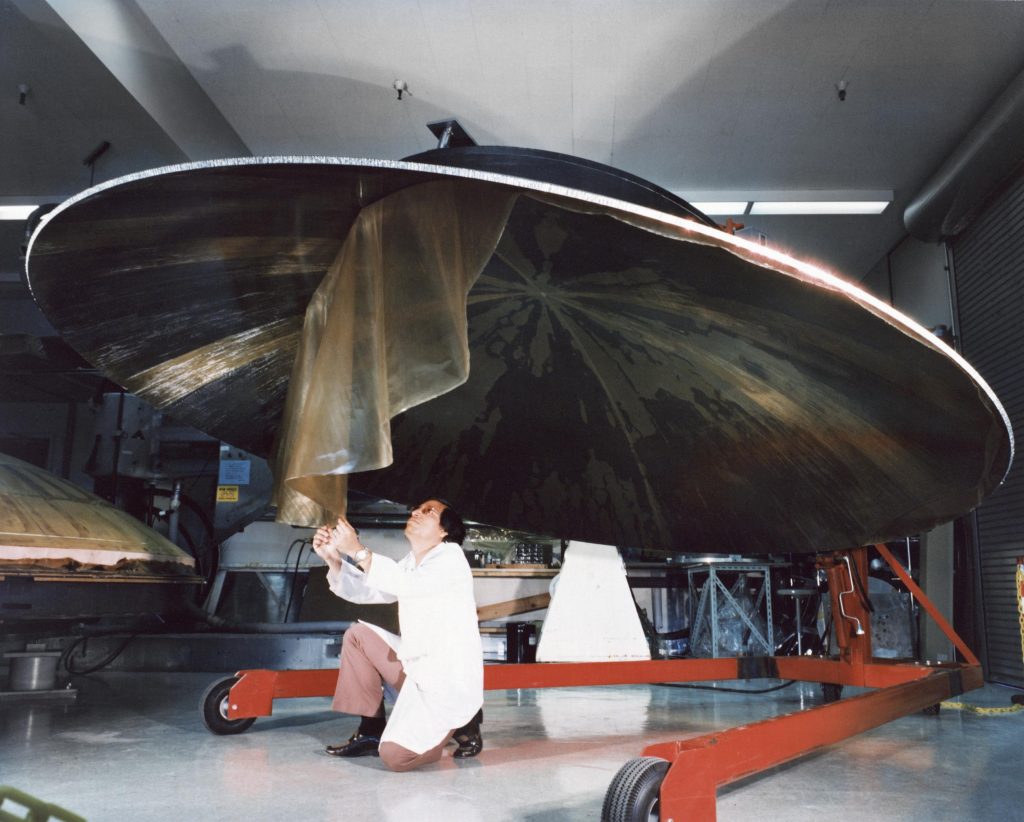
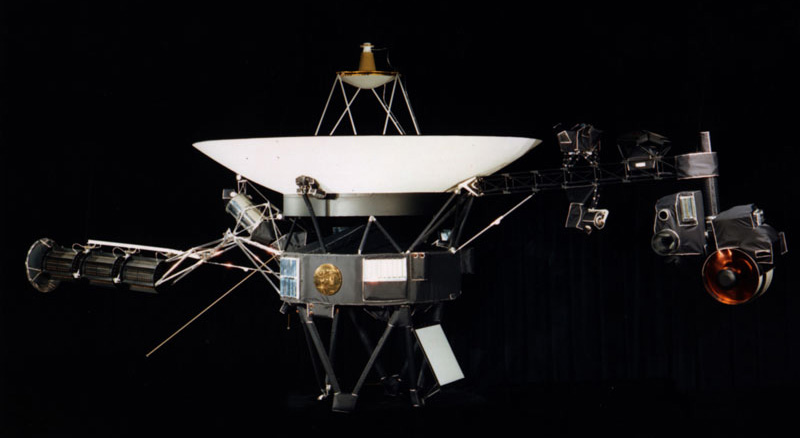
When was Voyager 2 launched?
Voyager 2 launched on August 20, 1977, from Cape Canaveral SLC-41, on a Titan IIIE/Centaur launch vehicle.
Even though the study of Uranus and Neptune was not officially included in the mission program (a guaranteed reaching of these planets would require the construction of devices with more advanced characteristics), the flight trajectory was calculated based on this possibility.
Why was Voyager 2 launched first?
The launch order and flight paths of the probes were planned to ensure that the overall goals of the program were achieved.
Although Voyager 2 was launched 16 days before its companion, due to its longer trajectory, it should have reached Jupiter and Saturn later than Voyager 1 by 4 and 9 months, respectively. This made it possible to adjust the Voyager 2 flight program depending on the results obtained by Voyager 1; in particular, to decide whether to send it along the Grand Tour trajectory, that is, to Uranus and Neptune.
Besides, if the launch of Voyager 2 had failed, then Voyager 1 could have been sent along the Grand Tour trajectory.
Where did Voyager 2 visit?
During the first 12 years of its journey, Voyager 2 visited all four planets of the outer group, making a lot of important discoveries that significantly expanded the scientific understanding of these gas giants’ systems.
Jupiter
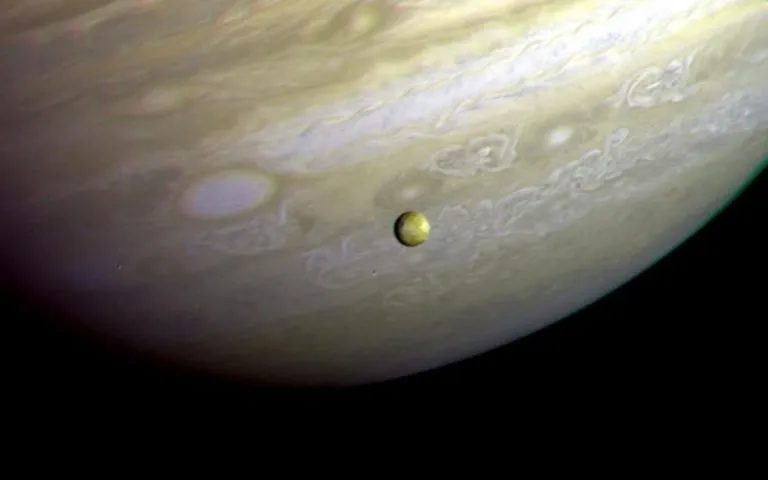
Between December 10, 1977, and October 21, 1978, Voyager 2 successfully crossed the asteroid belt and headed towards Jupiter. From April 24 to August 5, 1979, the probe made observations of Jupiter and its five satellites Callisto, Io, Ganymede, Amalthea and Europa, sending more than 17,000 images back to Earth. On July 9, 1979, the spacecraft made its closest approach to Jupiter at a distance of 350,000 miles from the planet’s upper layer clouds. Voyager 2 showed that the Great Red Spot is a complex system of storms, found signs of water on Io’s surface, confirmed the existence of a thin ring surrounding the planet, and discovered another moon beyond it, later named Adrastea.
Saturn
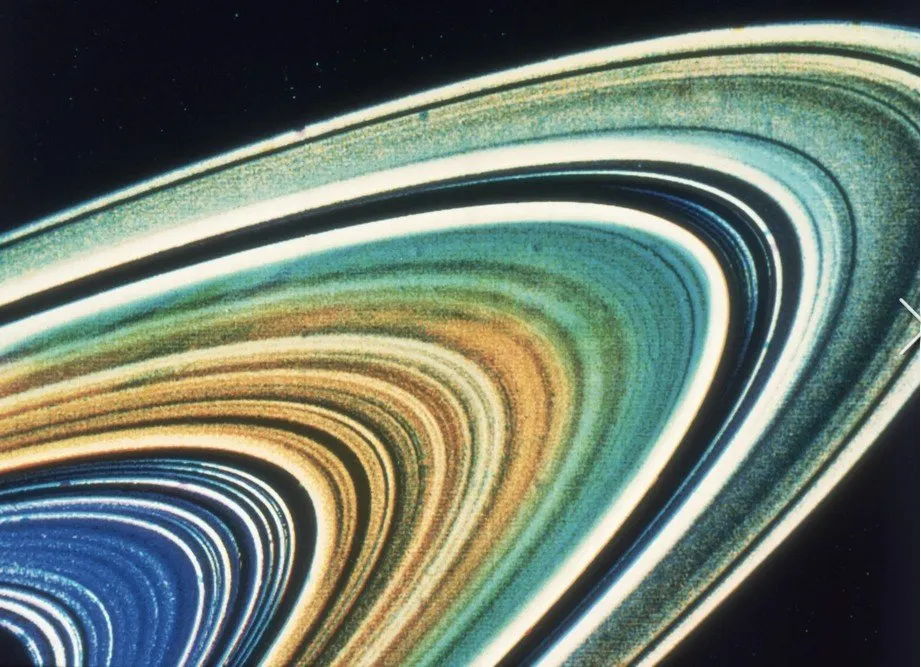
Voyager 2 began its long-range observations of Saturn on June 5, 1981, when it was still 41 million miles away from the planet. By September 28, when observations of the Saturn system were completed, the spacecraft sent 16,000 images of the planet, its rings and moons back to Earth. On September 29, Voyager 2 fired its course correction thrusters to head towards its next target, Uranus.
Uranus
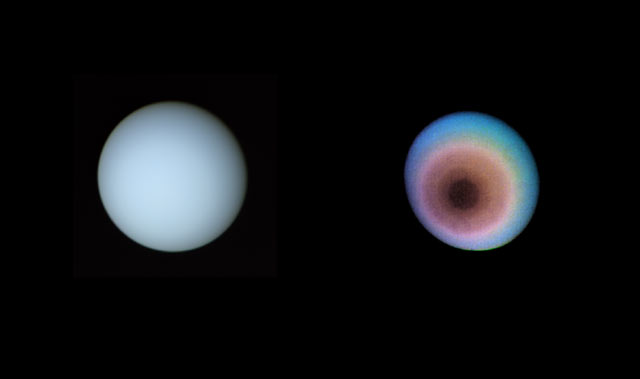
Voyager 2 began observing Uranus on November 4, 1985, creating a series of time-lapse videos of the planet and its surroundings. Due to the axial tilt of Uranus by almost 98 degrees to its orbital plane (the planet is practically lying on its side), the meeting of Voyager 2 was like aiming for a bull’s eye. On January 24, 1986, about 11 hours before the closest approach, Voyager 2 entered the planet’s magnetosphere.
The encounter phase with Uranus was completed on February 25, 1986. What did Voyager 2 discover there? The spacecraft took over 7,000 pictures, revealing 11 new moons and two new rings.
Neptune
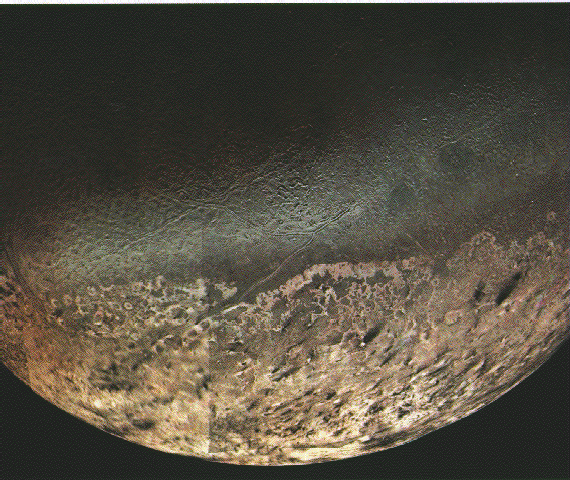
Voyager 2 Neptune research continued from June 5 to October 2, 1989. The probe made more than 9,000 images of the planet and its surroundings, which helped to discover five new satellites of Proteus, Talas, Naiad, Despina, and Galatea, while also confirming the existence of the Larissa satellite. The probe also revealed traces of geysers on Triton that spew dark material into the rarefied atmosphere of the moon, which later settles back to its surface.
Interstellar space
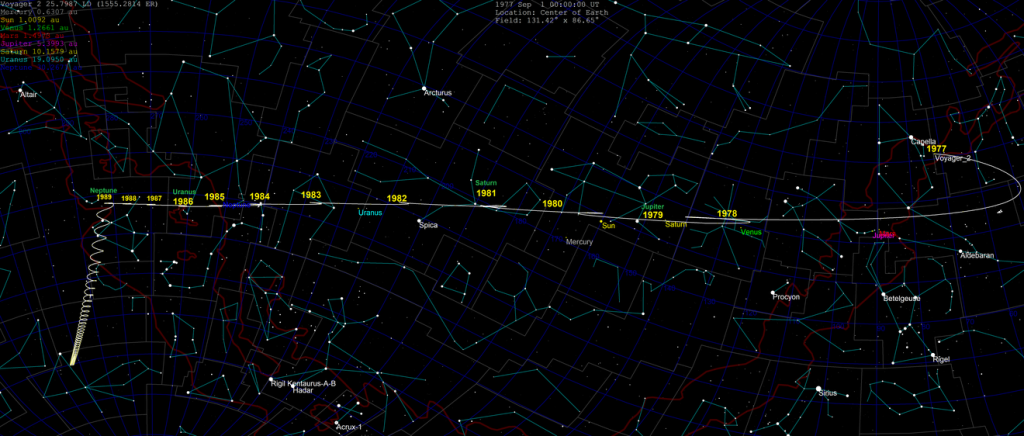
After the reconnaissance of Neptune, Voyager 2 began its interstellar mission, which continues to this day. On November 5, 2018, the ship left the heliosphere and entered interstellar space.
On July 18, 2023, Voyager 2 overtook Pioneer 10 and became the second farthest spacecraft from the Sun after Voyager 1.
Where is Voyager 2 now in 2023?
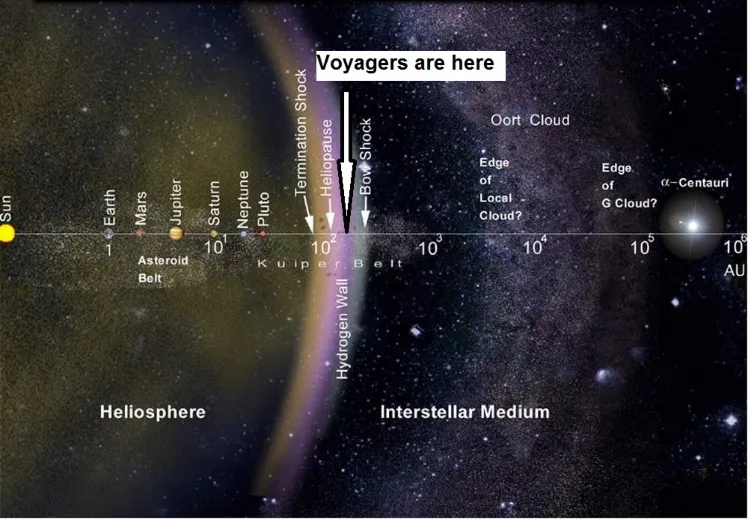
Voyager 2 is currently in the constellation of Pavo, at a distance of 9.9 billion kilometres (about 12.4 billion miles) or 133 A.U from Earth. The current Right Ascension is 20h 08 m 36s and the Declination is -59° 13’ 56”.
Right now, from the United Kingdom, the spacecraft is not visible because it is below the horizon. You can check Voyager 2 Rise and Set Times to know when it will rise at your location.
How fast is Voyager 2 travelling?
Voyager 2 speed is approximately 55,470 km/h (or 34,390 miles per hour or 15 km/s) relative to the Sun. If it were in the atmosphere, it would fly around the Earth’s equator in 14 minutes. The ship has already passed all the large objects, so their gravity does not prevent it from developing a speed sufficient to leave the solar system.
In 2018, Voyager 2 reached the edge of the heliosphere, which extends twice as far as Pluto, but to break out of the Solar System, it needs to cross the Outer Limit of the Oort Cloud, which defines the hypothetical cosmographic boundary of the Solar System. According to scientists, this will take another 30,000 years. Incredibly long!
Has Voyager 2 lost contact?
On 21st July 2023, at a distance of 133 AU (19.9 billion km) from Earth, contact with the Voyager 2 probe was lost. The reason was an erroneous command sent to the Voyager computer, as a result of which it changed the orientation of the ship, and its antenna deviated from the line of communication with the Earth by two degrees. This was enough to stop the spacecraft from transmitting and receiving data.
Fortunately, just for such a case, the probe was programmed to “reset” its orientation data several times a year so that its antenna always remained directed towards the Earth. The next reset will take place on October 15th. But NASA decided not to risk it. They used a powerful radio telescope in the Australian capital, Canberra, to bombard the Voyager 2 area with messages containing the right command in the hope of regaining lost contact.
As a result, on 4th August, the space agency confirmed that the data from the spacecraft had been received and that it was working correctly.
Will Voyager 2 ever stop?
This can happen if the probe collides with another object or is pulled into the orbit of a celestial body by its gravity. But Voyager 2 travels in interstellar space, which is very rarefied, so scientists consider such a scenario unlikely. Even when a ship runs out of its energy sources and is no longer steerable, it will simply drift forever in desolate space.
Will Voyager 2 ever come back to Earth?
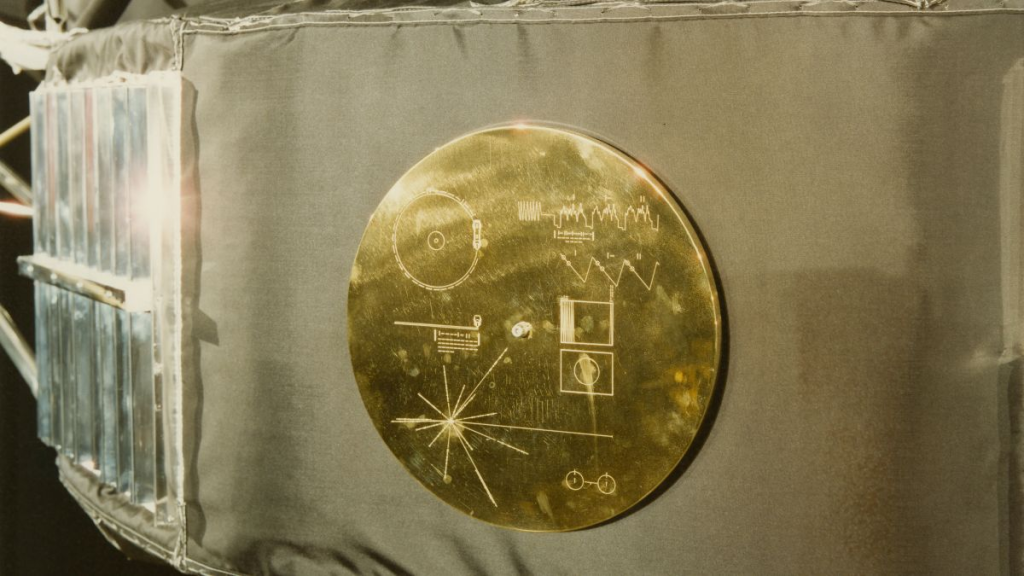
No, Voyager 2 will never return to Earth, primarily, because it was not built for a return. But even assuming NASA wants to bring the probe back, its engineers don’t have a plan for it. The probe is too far away from Earth and has lost too much power to make a thruster adjustment for the return course.
One can only hope that Voyager 2 fulfills its final mission — deliver a famous Golden Record, a message to any potential extraterrestrial civilizations. After all, there must be someone in this universe besides us.
Voyager 2 timeline
Date | Event |
|---|---|
| August 20, 1977 | Spacecraft launched at 14:29:00 UTC. |
| December 10, 1977 | Entered asteroid belt. |
| December 19, 1977 | Voyager 1 overtakes Voyager 2. |
| June 1978 | The primary radio receiver fails. The remainder of the mission has been flown using backup. |
| October 21, 1978 | Exited asteroid belt. |
| April 25, 1979 | Start of the Jupiter observation phase. |
| June 5, 1981 | Start of the Saturn observation phase. |
| November 4, 1985 | Start of the Uranus observation phase. |
| August 20, 1987 | 10 years of continuous flight and operation. |
| June 5, 1989 | Start of the Neptune observation phase. |
| October 2, 1989 | Begin of the Interstellar Mission. |
| Interstellar phase | |
| August 20, 1997 | 20 years of continuous flight and operation. |
| November 13, 1998 | Terminate scan platform and UV observations. |
| August 20, 2007 | 30 years of continuous flight and operation. |
| September 6, 2007 | Terminate data tape recorder operations. |
| February 22, 2008 | Terminate planetary radio astronomy experiment operations. |
| November 7, 2011 | Switch to backup thrusters to conserve power. |
| August 20, 2017 | 40 years of continuous flight and operation. |
| November 5, 2018 | Crossed the heliopause and entered interstellar space. |
| July 18, 2023 | Voyager 2 overtook Pioneer 10 as the second-farthest spacecraft from the Sun. |


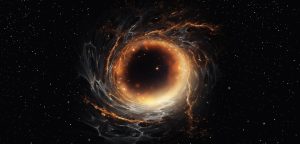
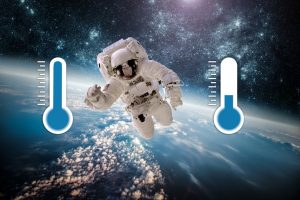


Thank you for your comment! It will be visible on the site after moderation.